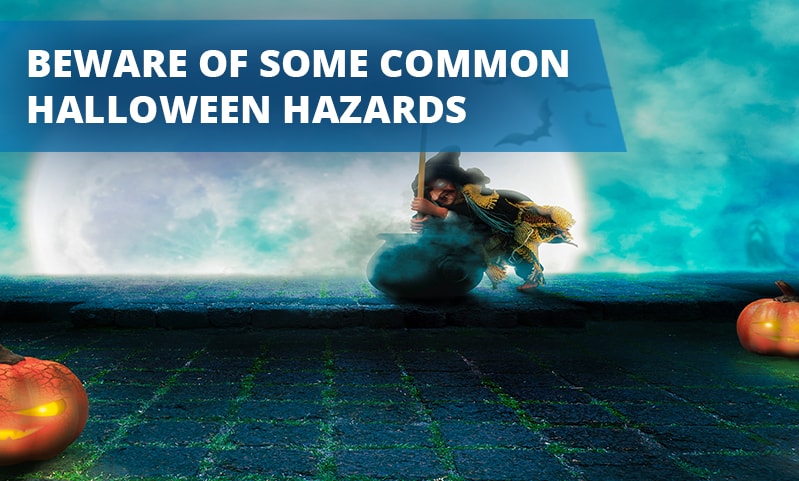Among four to eight-year-olds, pedestrian accidents are ten times higher on October 31 than on any other day of the year. Halloween hazards exist for older children and adults as well.
Ghosts, goblins, and other phantoms usually don’t cause these hazards. Instead, another person’s negligence, usually a driver’s negligence, normally causes them. If I buy the wrong Halloween candy for my picky 13-year-old, consequences arise. Likewise, if I drive negligently and hurt someone, consequences arise.
Unless a Adwokat ds. obrażeń ciała w Nowym Jorku takes them to court, negligent drivers can disappear into the night and avoid legal responsibility. In a perfect world, tortfeasors (negligent drivers) would readily accept responsibility for their mistakes; unfortunately, we don’t live in a perfect world.
Pedestrian Crashes
Young child pedestrian accidents spike on Halloween mostly because more children are out and about. Furthermore, most trick-or-treaters hit the streets at dusk or early twilight when visibility is limited.
Furthermore, many of these pedestrian accidents occur outside marked crosswalks. These crashes are often legally complex.
Since most pedestrian accidents happen on open streets, vehicle speed is one of the primary factors in these cases. Velocity multiplies the risk of a wreck and the force in a collision. The visibility factor, along with the victim’s small size, further increases the risk. Even a low-speed wreck could cause serious injury.
Speeding drivers could be negligent in these cases even if they’re traveling under the speed limit. The posted limit is a presumptively reasonable speed under ideal conditions, however Halloween night conditions are far from ideal.
Constructing a solid negligence case on a foundation of excessive speed is a good start. But it’s only a good start. To obtain maximum compensation, a lawyer must anticipate common insurance company defenses, such as:
- Comparative Fault: Children have the same rights and responsibilities as everyone else on the road. If they don’t stop and look both ways, they could be partially responsible for any ensuing wrecks. In New York, the judge usually reduces compensation in proportion to the contributory fault (e.g. victims who were 50 percent responsible get their compensation cut in half).
- Sudden Emergency: In some cases, contributory negligence could be a complete defense to a negligence claim. The emergency rule shields tortfeasors from lawsuits if they reasonably reacted to a sudden emergency. A child running into the street is unexpected, but it’s certainly foreseeable (possible), especially on Halloween. Therefore, this rule usually doesn’t apply in pedestrian accident cases.
Compensation in a personal injury claim usually includes money for economic losses, such as medical bills, and noneconomic losses, such as pain and suffering.
Tainted Treats
Halloween party hosts are usually negligent if they serve food that causes an anaphylactic allergic reaction. Usually, hosts are negligent even if they didn’t know the victim had a serious food allergy, especially if they serve high-allergy foods, such as:
- Nuts,
- Jajka,
- Seafood, and
- Milk.
Incidentally, there’s a difference between lactose intolerance and a milk allergy. Lactose intolerance only affects the digestive system. A milk allergy, like any other food allergy, is basically an immune disease that prompts the body’s defense mechanisms to attack the body.
Intentionally lacing traits with a toxic substance is not just a ghost story, although these incidents are few and far between. Legally, these claims are intentional tort claims. Although they’re different from negligence claims, the same compensation is usually available.
Alcohol-Related Wrecks
Children often consume too much candy after Halloween trick or treating, and their parents often consume too much alcohol at Halloween parties.
The impairing effects of alcohol, such as slow reflexes and clouded judgment, begin at the first drink.
The duty of care requires motorists to be at their absolute best, mentally, physically, and otherwise, before they get behind the wheel. Drinking and driving clearly breaches that legal responsibility.
To obtain compensation, an attorney must prove alcohol impairment by a preponderance of the evidence (more likely than not). Evidence of impairment includes alcohol proximity prior to driving (e.g. attending a party where the host served alcohol), erratic driving before the wreck, and physical symptoms, such as bloodshot eyes.
In addition to the compensatory damages mentioned above, jurors often award additional punitive damages in these cases. To many jurors, tortfeasors who drive drunk on Halloween night are incredibly reckless.
Have a safe and happy Halloween! Contact Napoli Shkolnik for a Darmowa konsultacja. We do not charge upfront legal fees and will only recover a fee when we win your case.
